 In Dallas, my family’s house was on Lombardy which was directly across from Crown Hill Memorial Park Cemetery, which held the grave of Bonnie Parker. (Her grave is shown below) It was a troubled time of my teen-aged life, but I remember walking through the cemetery at night and seeing so many feral dogs running through it. That troubled memory gave me the idea for this short horror story, “Cemetery Dogs.” I do hope you like it. If you do, I’d like to hear from you either by email or on FB.
In Dallas, my family’s house was on Lombardy which was directly across from Crown Hill Memorial Park Cemetery, which held the grave of Bonnie Parker. (Her grave is shown below) It was a troubled time of my teen-aged life, but I remember walking through the cemetery at night and seeing so many feral dogs running through it. That troubled memory gave me the idea for this short horror story, “Cemetery Dogs.” I do hope you like it. If you do, I’d like to hear from you either by email or on FB.
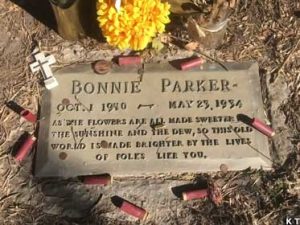
CEMETERY DOGS
Kenneth Dyer was a senior at Thomas Jefferson High School. On his walk home, stopped at the 7-11 at the corner of Webb Chapel Road and Lombardy Lane. School had started in mid-August this year, and it was hot, so he bought a bottled Coke. He stood outside the convenience store, and stared blankly at the Mount Calvary Cemetery cattycorner from the store.
The dogs were there again. They were silent, and in a straight line, facing the road. He watched an animal control vehicle drive through the cemetery gate and park near the dogs. A uniformed officer stepped out of the truck.
“Run, boys,” Kenneth whispered. “He wants to take you to the pound. They’ll put you to sleep there. Not a good place for dogs, my friends, not good at all.”
The officer walked toward the dogs with a noose-stick in one hand and a cattle prod in the other. The dogs moved back toward the creek a few steps, lined up once again, and squatted down. The dogcatcher cursed them. Every time he advanced, the dogs backed up. This game continued until the pack had led the dogcatcher out of sight.
After Kenneth drained the Coke, he pitched the bottle into a trashcan, and walked across Lombardy Lane to his house. His father was in his Lazy Boy reading the paper.
“Hi, Dad,” Kenneth said.
His father looked up from the Dallas Times Herald and frowned. “When are you going to get a haircut? Every other boy in Dallas has a crewcut and you have to wear your hair like a sheepdog or a durn girl.”
Kenneth knew better than to say anything when his father was in this kind of faultfinding mindset, but he popped off anyway. “I know, Dad. I know. Maybe tomorrow I’ll get a Frankenstein haircut and a gallon of Brylcreem. Then I’ll join the ROTC or football team. I’ll make you so proud someday.”
“Don’t be a smart ass, Kenny.”
Kenneth heard the dogs as they ran barking down the alley, and Kenneth’s father jumped out of his chair. “Dam those dogs!” He opened the back door, snatched a rock from the ground and chunked it at them. When he came back in the house he said, “This is the nosiest damn neighborhood I’ve ever seen. Those dogs carry on every night in the cemetery. You’d think we didn’t have a leash law here. I called animal control and told them to get them out here and pick them up. Folks are tired of them feeding out of the trashcans. The postman has been nailed twice and has threatened to stop door delivery until something’s done.”
Kenneth looked out the window and saw the pack making tracks. He felt relieved and he figured they must have all gotten away. “Aw, don’t bother them, Dad. They don’t bother anyone and they’ve got a right to live too. At least they’re free. I actually admire them—living on the fringe of civilization, surviving and breeding in spite of all odds. I think we should just leave them alone.”
“Damn. Listen to yourself. I hope you’re not going to end up one of those tree-hugging communist hippies. How was school?”
“Alright, I guess,” he replied. Actually, it sucked, Dad, but I know you don’t want to hear that. “It was kinda hot walking home.”
“It’s supposed to be hot in the middle of August,” his father said. “Winter will be here soon enough, and you’ll want the dog days back.”
“T’was the winter of our discontent,” Kenneth said.
“What?”
“Nothing. Just something I heard the teacher say in English. She’s started the year quoting Shakespeare. I hate school.”
“Good. Maybe you’ll hate enough that you’ll pass this year.” His father lifted the paper again. “Besides, if you had been raised working on a farm, you wouldn’t complain. I loved going to school and I had to walk there every day.”
“Well, I don’t. I wish we could move to another house.”
“Nothing’s wrong with this house. You should be grateful. Your mother and I lived in a barn on my daddy’s farm when we first married.”
And you deserved every minute of it, he thought. Kenneth wished his father knew how much he hated the house, and how much he wished they could live somewhere else. A lot of bad things can happen to a boy in houses. Every time Kenneth stepped into the house, he stared straight at the patched up hole on the sheet-rock wall. A reminder of a sad night, an angry night, a night when both he and his father had said and done things they shouldn’t have, a night when both of them were hurt—one on the inside, and the other on the outside and inside. A tear-blinded and panicked run to his friend’s house. Weeks of silence when he returned. His mother going to the store one night, but never returning. Abandoning Kenneth to the care of his father, the way some people take a pet out to the country.
“I’m going to play my stereo for a while, okay, Dad?”
“Just don’t play none of that loud hippie shit. I don’t see how you can even call that stuff music. Do you have homework?”
“I’m supposed to read a chapter or two of Heart of Darkness. After I finish, can I go to the roller rink for the battle of the bands?“
“No. Stay at home. It’s a school night. You think you can do anything you want, anytime you want. I’m not going to let you go wild on me. Last time you went there you didn’t get home to nearly midnight.”
“Well, if I was a football player or a cheerleader, I’d be out past midnight two or three nights a week.”
“But you aren’t a football player. God, I wish you were. I think it would be good for you. Football builds character. But the music you like listening to doesn’t help you as far as I can tell. So, you aren’t going to the battle of the bands at the Starlight Roller Rink.”
“Dad . . .”
“What did I say?”
“Okay.” Once in his room, Kenneth put on the Cream album, and the blues melodies of Eric Clapton’s guitar calmed him. When it finally grew dark, he turned on his black light and studied the psychedelic posters of Jim Morrison and Jimi Hendrix he had hung, then contemplated the photographs of wolves and dogs tacked to his wall. One was a picture a traveler had taken of some pye dogs in Africa. Somehow the pye dogs reminded him of the cemetery dogs. He waited, listening to the music and to the hated house as it settled, to the attic fan, to the restless tossing, breathing, and finally the snoring of his father.
Then, as he did nearly every night, he peered out his window with his father’s binoculars. Directly across the street from Kenneth’s house was the 7-11, and catty-corner from their house was Mount Calvary Cemetery, where supposedly one member of the Bonny and Clyde gang was buried. Kenneth was a bit of an insomniac, and usually it seemed that the longer he stayed awake, the more wired up he became. So, he spent most nights gazing through his father’s binoculars at the few stars that bled through the Dallas smog, at the late night visitors shopping at the 7-11 across the street, and looking at the dogs as they played in the cemetery.
There was a full moon tonight, and Kenneth could make out the forms of tombs, crosses, cenotaphs, and gravestones with rounded tops. Finally, he heard the dogs, baying, and barking. He had read that dogs usually got together in packs when a bitch was in heat, but he thought this bunch was more like a gang, a brotherhood. There was something that made them want to sing when they were together. The howling of the dogs’ voices was not like that of Dracula’s wolves, but Kenneth thought of the dogs as his own “sad children of the night,” and he found their chorus beautiful and comforting, and the songs awakened something primeval and feral in him.
He watched the dogs emerge from the thick brush-lined creek that ran behind the cemetery. At first, they were only dark streaks, moving, gliding back and forth in the distance, playing with each other and moving closer to the front and center of the cemetery. As they neared, Kenneth began to make out details—pointed ears, curled tails. He watched them play for a while, chasing each other, running in circles around the tombs. When he saw the black mastiff, which was the pack’s leader, he pulled the sack from under his bed, pushed open the window screen, slipped outside, and strolled over to the cemetery. The animal control vehicle was still parked by the gate, and he could hear its CB radio belching out gibberish, but there was no officer in sight.
The dogs saw him and trotted his way, tails wagging. They were a motley crew—a Great Dane, a Doberman, A German Shepherd, a bulldog, a pit bull, and one with a beautiful howling voice that Kenneth thought had to be half-wolf.
Kenneth felt no fear as the dogs approached him. He thought of them as friends or family. The Mastiff led them. He stopped, barked once and the other dogs sat on their haunches. Then the Mastiff moved up and licked Kenneth’s hand. Kenneth knelt down and petted him. “Good boy. So how you doing tonight, General? I brought you boys some dogfood. Hungry, General?”
General licked his face and barked. The others came closer, and soon they were rolling around, wrestling, jumping, nipping, chasing each other, playing the way dogs play—ways he never got to play when he was a kid. Kenneth promised himself he would come tomorrow with more food, and some worm pills and flea powder if he had enough money to buy it for them.
He felt privileged being part of the pack because he knew they were particular about adopting strangers—even other dogs. One night a stray bitch slunk up to the circled group. She looked like she had just whelped, but there was no sign of the pups. She was also covered with mange and ringworm. He felt sorry for her for a while. She did everything right. She cowered submissively before the alpha dog, but General didn’t want anything to do with her. General’s growl was the signal. The band rushed in and killed her, and within a half-hour, they had eaten her—bones, hide, everything. Just like wild dogs do when they kill something. Kenneth had read that eating the whole animal was how dogs obtained all the necessary vitamins.
Early the next morning, Kenneth saw two police cars parked by the cemetery gate. The officers walked through the cemetery, called a tow-truck for the pound’s truck, and left.
On his way to school, Kenneth strolled through the cemetery. He walked to the edge of the thick brush at the back of the cemetery. On the creek’s bank, he saw some hairballs. When he heard an unfriendly growl coming from the brush, he turned around and walked home.
“I hear you,” he whispered. “Don’t worry, I won’t give you away. What did you fellows do with the dogcatcher?”
That night, Kenneth looked out his window to again see the dogs silently lined up, waiting. Kenneth wondered what they had in mind.
Directly across the street, he spotted a man skulking in front of the convenience store. Kenneth raised his binoculars to check out the man better. The man’s hand tightly clutched a sack wrapped around a bottle of malt liquor. A ragged bedroll lay beside him and something indefinable cried out “homeless.” His eyes twitched and flitted, and something about his expression suggested that the wiring was loose upstairs. Kenneth could tell he was a misfit, a man who would never blend in with the rest of men. Kenneth knew that the man must have stunk, and by the way the man studied the store’s customers, he suspected he was a thief, a man looking for the unlocked, unwatched car. He might even be a purse-snatcher should he become desperate enough. The intoxicated man staggered from the store toward the cemetery. The dogs were silent and still sitting in position.
Kenneth popped out his window screen, slipped out, picked up his sack of dog food, and trotted across the road, following the drunk at a distance.
The drunk either didn’t see the dogs or he ignored them. He crawled on top of a tomb and spread out his ragged bedroll as if he planned on sleeping there. Kenneth watched as the dogs filed to the tomb the man lay on and circled it. General barked several times.
The drunk threw his beer bottle at General and shouted, “Get out of here you mangy mutt!”
General trotted up and licked his hand. The drunk laughed and rubbed the dog’s head. “Good doggie. Man’s best friend. There’s always a dog that will understand. You had me going there for a minute.”
General pulled at the man’s pants leg. The drunk laughed and stood up. Another dog likewise latched onto his pants leg and pulled. The sot laughed harder. Working together the dogs herded him toward the back and dark portion of the cemetery near the creek.
“You boys gotta let me get some sleep,” the man said. He kicked his pants loose from their mouth and started back to his sleeping spot.
That was when General, the alpha dog, growled. The growl was followed by a chorus of the other dogs, who began growling, snarling, their teeth popping and snapping. The drunk stiffened and managed to scream once before General ripped out his throat. Then the others moved in, and Kenneth watched them tear the man to pieces. The dogs dragged the man’s corpse back to the creek. For some reason Kenneth began humming a song, “One is the loneliest number . . .” And then an idea came to him.”Holy shit!” he said as he crawled into his window. “I can’t wait to introduce Billy to General and the pack.”
For the first time, Kenneth went to school the next day looking for Billy. Usually, Kenneth would avoid Billy at all costs. Billy was the redneck version of a nemesis. If Kenneth passed anywhere close to him, Billy would insult him, hit him, knock his books from his hands, and some days even take his money at lunch. It seemed like Billy’s purpose in life was to give Kenneth a hard time. But today before school started, instead of hiding from Billy, Kenneth stood close to the door where Billy and his moron friends hung out. Billy spotted Kenneth and walked over.
“I need some lunch money today, Kenneth.”
“What’s wrong? Your white trash mama didn’t do enough two-bit tricks last night?”
Billy’s face reddened, and he pushed Kenneth against the wall, so hard that Kenneth’s teeth rattled.
“You just created a heap of trouble for yourself, you long-haired sissy,” Billy said.
“Watch out, Billy. Here comes the coach,” one of the morons said.
Billy raised a fist. “Give me some lunch money, Kenny.”
Kenneth dug in his jeans and handed him the two quarters he received every morning for lunch.
“That’s not enough.”
Kenneth swallowed hard. “I’ll give you more, really. Don’t hit me. I’ll give you ten dollars. But I don’t have it now.”
“When can you have it?” Billy asked.
“I’ll have to pinch it from my father. I can meet you at the cemetery by my house after school. My dad won’t be able to see me that way.”
“If I was the suspicious sort, I would think you were planning on having some friends with you to jump me.” Billy smiled, then slapped himself on the head. “Boy, that was stupid. You don’t have any friends. Okay. But, you better be there with the money, wimp.”
“I’ll be there. Billy, please. Don’t you tell nobody about this ten dollars. If you do, they’ll want me to give them some money too. I can’t give money to everybody.”
That afternoon, Kenneth sat on the top of the tomb, next to General, and waited for Billy. The other dogs were scattered around them eating the dog biscuits Kenneth had pitched out. Finally, he saw Billy walking their way.
“Get ready, General. He’s the one I been telling you about. He ain’t no good. You can tell that, can’t you?”
General licked Kenneth’s hand.
As Billy approached the tomb, General’s hair bristled, and he growled, low and deep. He barked twice and the dogs eased up from their resting-places and circled Billy.
Billy kicked out at them. “Go on, git out of here!”
“What’s wrong, Billy? Scared of dogs?” Kenneth said.
“I ain’t scared of dogs. Give me the money.”
“I ain’t gonna give you no more money, Billy. You’re not scared of dogs? You should be scared of these. They’re my friends. You see that big one, he’s General.” Kenneth stood up, bowed, and motioned to Billy with his arm. “General, I leave this bully to your capable care. As Ms. Evans said today in her Shakespeare class, ‘Let slip the dogs of war!'”
General had been staring at Billy. He hopped up on the tomb and issued a low malevolent growl. They say you shouldn’t run from a dog, but Kenneth didn’t think it would have made any difference if he had run or stayed put. Billy tried to run. The wolf-dog caught him by the throat and held Billy while one of the other dogs disemboweled him. The pit bull clamped on his arm so hard that Kenneth heard the bones snapping. In a moment, Billy quit struggling. Kenneth knew this was one bully who wouldn’t be at school tomorrow.
Kenneth helped the dogs drag Billy back to the creek, and until dark he watched as the pack played with Billy’s clothes, bones, skin, and hair, then watched as they ate most of him. When the pack was finished with Billy, General led them out of the cemetery. This time Kenneth followed at a dogtrot. They traveled up Webb Chapel Road then down an alley. After the pack stopped behind a house, Kenneth watched the Great Dane jump the fence, snatch up a poodle in its mouth, and then clear the fence again without breaking stride. General, followed by the other dogs, climbed the chain-link fence and slipped inside the devil’s door originally designed only for the poodle. Directly, Kenneth heard the family members screaming. And he knew what was happening. He hopped the fence, and crawled in the devil’s door behind them.
Later that night, howling like the others, Kenneth sat naked on the tomb next to General, sharing a leftover piece of Billy’s flesh, tearing at it with his teeth, he and General snarling, and snapping at any other dog that came too close.
Toward dawn, Kenneth woke to the sound of the gunshots and the shrill yelps and screams of the other members of the pack, but the danger didn’t register. A sharp beam of light probed his eyes, a hand shook him roughly, and a voice as harsh and contemptuous as his father’s cursed him. Kenneth snarled and lunged at the flashlight, and latched onto the policeman’s hand with his teeth. The policeman hammered Kenneth with a nightstick until Kenneth let go, and then he and another policeman beat him like a dog, hammering him until he lost consciousness.















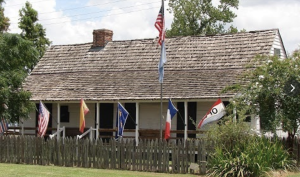

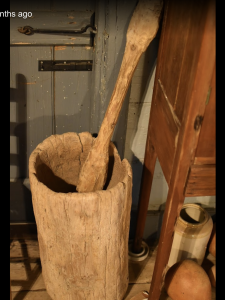
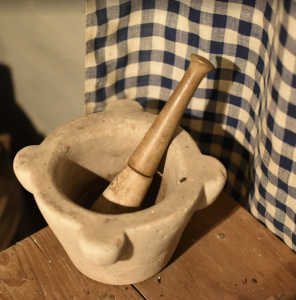
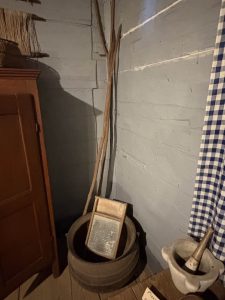
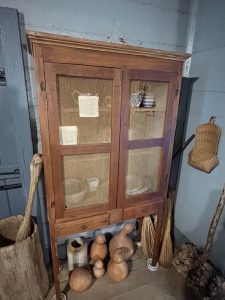
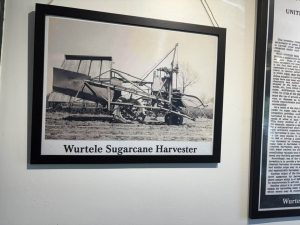
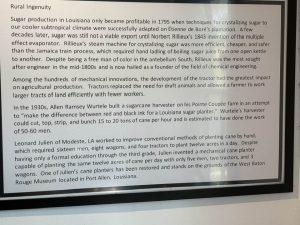

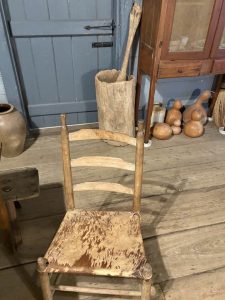
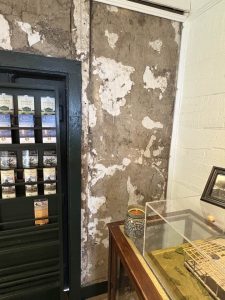
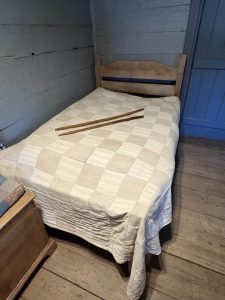
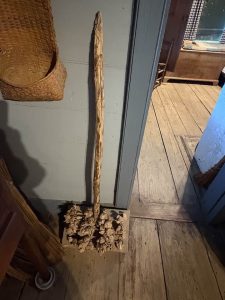
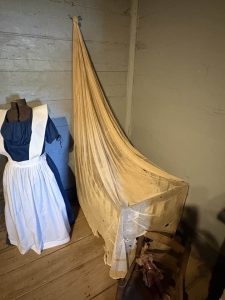
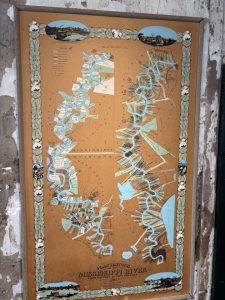

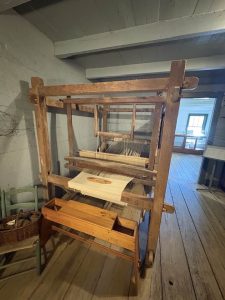
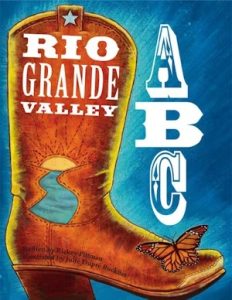
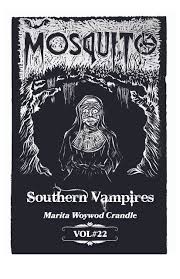



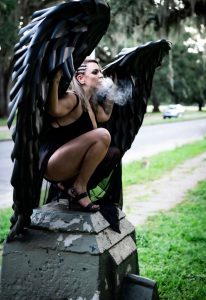
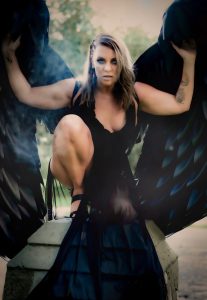
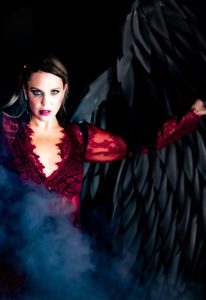
 In Dallas, my family’s house was on Lombardy which was directly across from Crown Hill Memorial Park Cemetery, which held the grave of Bonnie Parker. (Her grave is shown below) It was a troubled time of my teen-aged life, but I remember walking through the cemetery at night and seeing so many feral dogs running through it. That troubled memory gave me the idea for this short horror story, “Cemetery Dogs.” I do hope you like it. If you do, I’d like to hear from you either by email or on FB.
In Dallas, my family’s house was on Lombardy which was directly across from Crown Hill Memorial Park Cemetery, which held the grave of Bonnie Parker. (Her grave is shown below) It was a troubled time of my teen-aged life, but I remember walking through the cemetery at night and seeing so many feral dogs running through it. That troubled memory gave me the idea for this short horror story, “Cemetery Dogs.” I do hope you like it. If you do, I’d like to hear from you either by email or on FB.